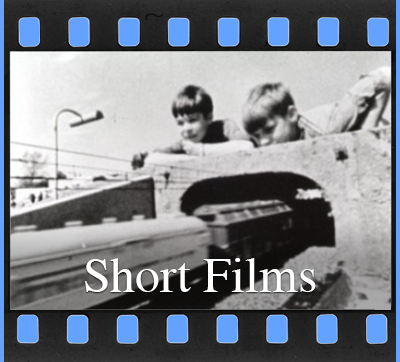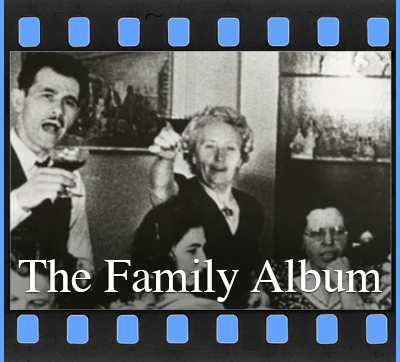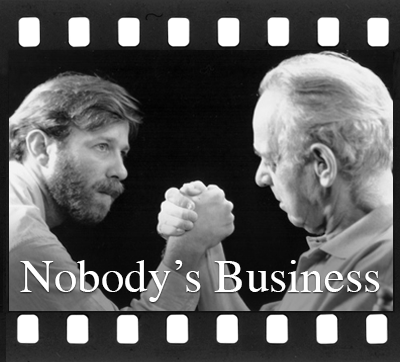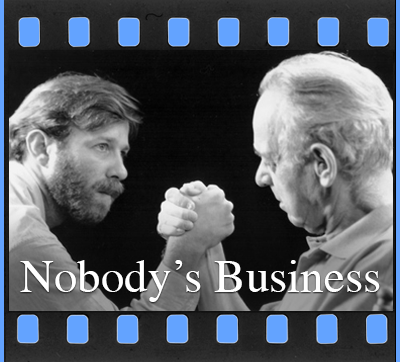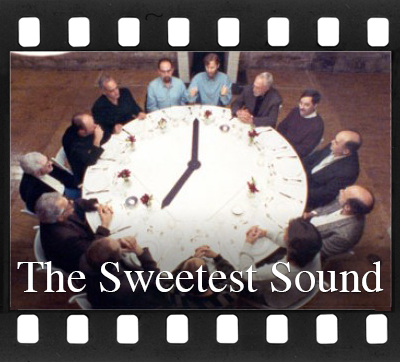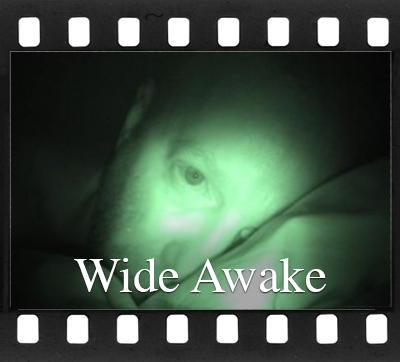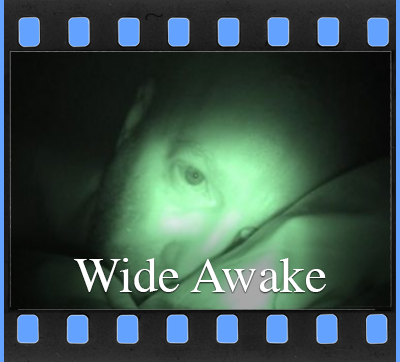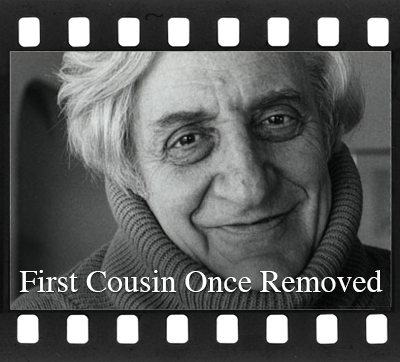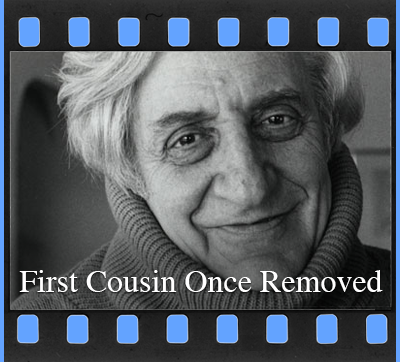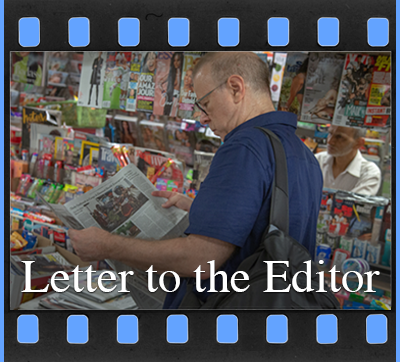Alan Berliner’s Works as Communal Autobiographies
[Alan Berliner’s Oeuvre, or Autobiography as Everybody’s Business]
2014
By Jean-Luc Lioult
Translated from the French by Marcelline Block
Abstract:
Alan Berliner is a fascinating, unclassifiable independent filmmaker who has devoted 25 years to the making of films which have led him from a reflection on family in general to the questioning of his own family, then to an interrogation on identity and finally, to his self-portrayal as an artist. These works do not completely meet the usual standards of subjective or autobiographical documentaries. Historically speaking, Berliner may appear as an inheritor of various trends dealing with intimacy and self-inscription. According to the criteria formulated by Bill Nichols, his works display a strong reflexivity, and subsequently a good deal of performativity. But above all, he has developed a style of his own. He is a virtuoso of montage creating sophisticated signifying figures, often dissociating the sound from the image, to reveal latent meanings, unexpected correspondences, contradictions and distortions. Nobody’s Business, possibly his masterpiece, draws a portrait of his own (reluctant) father and shuffles around History, individual life storytelling, psychodrama and genetics, to eventually convince us that the personal is universal.
keywords: Alan Berliner, autobiography, documentary, documentary theory, family film, filiation, identity,subjective documentary, United States
Specialist of the family film, one-man orchestra, or “the man without a movie camera”[1] – as well as a virtuoso editor – Alan Berliner is a compulsive collector cultivating an obsessional taste for lists, sets and rankings. Equally an auteur of installations that mix sound, video and photography, he describes his own method as using collage and searching for serendipity, demanding liberty, patience and passion.[2] His films are considered documentaries, experimental documentaries, personal films, essays and autobiographical documentaries. Shown in the most prestigious film festivals (where they have won many prizes), universities, and on public television channels (particularly in the United States), their brilliant and ironic style, although very different from that of a Michael Moore, has not brought them a wide audience.
If Alan Berliner is, without a doubt, heir of the currents that precede him and of the practices of his elders, as well as inscribes himself socially in the movements of his time, he does not allow himself to be easily categorized. Moreover, the materials and strategies of filmmaking that he uses evolve over time. Having lengthy experience as an editor, and after having made a certain number of short, experimental films, he created a series of five films[3] made in regular intervals of five years, from 1986-2006: The Family Album (1986), Intimate Stranger (1991), Nobody’s Business (1996), The Sweetest Sound (2001) and Wide Awake (2006). These five films form a whole, which, while evolutionary, is of a striking homogeneity. The filmmaker followed, for twenty years, a guiding principle that led him toward a reflection on family in general and to questioning his own, and then to an interrogation of his identity as it is determined by his familial and social origins and even by his own name, and then finally to his self-portrait as an artist.
Necessary non-fictions
The Family Album is the work with which the director reaches artistic maturity. Almost entirely built from found footage (and thus the only work which plainly justifies his moniker of “the man without a movie camera”), it is a long collage of amateur films from the 1920s-1950s, with sound added. From these anonymous families the typical American family is constructed, fulfilling its collective destiny from birth to adulthood and old age. The effects of montage and a complex relationship between image and sound here contradict the overall joyous tone that characterizes the family film, which is traditionally geared toward the celebration of a mythical unit during happy moments. On the other hand, the informed spectator who knows Berliner’s subsequent films can identify among the sound elements (including life stories, family audio recordings, and birthday parties), the voices of the filmmaker’s own father, sister, and mother.
The two following opuses combine the amateur film with family photos from public archives, interviews, and investigation. Intimate Stranger is the posthumous portrait of Berliner’s maternal grandfather, Joseph Cassuto, a singular character whose life story took place between Egypt, the United States, and Japan. The visual material of the film relies heavily on archives put together by Cassuto himself,[4] and the sound material consists primarily of interviews with diverse members of the Berliner and Cassuto families, or friends of the deceased. The opinions expressed diverge, and here as well, the relation between sound and image prove subtle: they can be contradictory, objected to, doubted, rebutted, and are thus much more than mere mutual illustration.
Nobody’s Business is a portrait of the filmmaker’s own father, Oscar Berliner, made several years before his death and despite the ungraciousness he exhibits towards letting himself be filmed. In fact, the son seems to endlessly renegotiate the father’s collaboration in this endeavor, during often-bitter exchanges. After having focused on the ancestors of this branch of the family (Eastern European Jews who fled their suffering by emigrating to America), the son then steers the conversation toward his parents’ divorce, which was very hard for him to accept. The filmmaker relies heavily upon family archives, particularly 8 mm images shot by his father -- whose relevance or hidden meanings he questions -- as well as interviews with his relatives.
The fourth film, The Sweetest Sound, exploits mainly testimonies and personal interviews. It is an essay about identity and homonyms: tired of being confused with other Alan Berliners, the filmmaker goes in search of those who share his name: a photographer, a lawyer, another filmmaker (the Belgian Alain Berliner) and a good number more. He systematically undertakes getting into contact with them, bringing the 12 of them he found (they all accepted the invitation) to his home for a strange dinner of homonyms, and attempts to implicate them in his reflection upon what makes each being unique beyond common features.
The last of the five films, Wide Awake, which is also the longest, is based, in large part, upon the auto-mise en scène of the auteur and his relatives. It is a portrait of the artist as insomniac: Berliner has been, for a long time, “jetlagged in his own time zone” and attempts to remedy this condition. Of a formal virtuosity that is grander perhaps than the preceding films, Wide Awake closes the cycle by making us penetrate into the creative process of the work’s fabrication: the filmmaker, often filmed in the studio that he installed in his home, shows his collections of films and photos (organized with maniacal care in innumerable identical boxes, which are classified by category according to the colors of the rainbow). He gives a demonstration of his installation Audiofile.[5] He invites us to a projection of Nobody’s Business at a university only to find that a good number of student spectators…are sleeping deeply during the film. Yet, movie theatres are among some of the rare places where Berliner admits that he, too, manages to find some rest!
Several formal features contribute to marking the auteur’s “signature” on these works: the virtuosity of montage, short takes, visual rhymes and effects of the anticipation of sound on the image are all omnipresent in these five films, and often serve up a subtle and brilliant humor. Starting with Nobody’s Business, the filmed “testimonies” (absent from The Family Album, presented as voice overs in Intimate Stranger) are quasi-exclusively taken from a frontal angle, on a neutral background, and uniformly framed in medium close-up, which reinforces the effects of comparison or of contradiction that are established between them. Additional sounds, often of a mechanical nature (the noise of a typewriter, the tapping of a metronome or the movement of a clock), provide a rhythmic meter on fast-paced tempos. This personal cinema is also a remarkable workshop for new images.
When placed in dialogue with his filmic texts, Berliner’s work journals[6] demonstrate the continuity of his preoccupations. In his chronicle of making of The Family Album, the filmmaker notes (May 7, 1985), that he “becomes an irrevocably nocturnal creature”, thus anticipating by more than 20 years the premise of Wide Awake; we find a very similar remark dated August 9, 1989 in the journal he kept for Intimate Stranger. The title of this last film appears to resume one that the auteur had envisioned for the preceding one: Distant Relatives (the June 25, 1985 entry). In Nobody’s Business (thus in 1996), the director mentions that, wherever he finds himself, he seeks other Berliners in telephone directories, which prefigures the premise of the following film, The Sweetest Sound. Having thus located – still always in Nobody’s Business – some distant cousins, they each, in turn, declare to him:
– We’re strangers. We’re related, but actually we’re strangers.
– We’re sort of relatives and sort of strangers.
– We’re strange relatives.
– We’re strangers who share a common history.
These premises are remarkably congruent with the filmmaker’s ideas on kinship; since the era of making The Family Album, Berliner has taken notes (journal entry of July 17, 1985) on the genetic claims that we are all cousins to the fifth degree on the vast genealogical tree of humanity in its entirety: this idea reappears eleven years later in the conclusion of Nobody’s Business. Constancy, tenacity, and perseverance are terms that suit this hard worker. He also demonstrates a certain sense of pride, having recently confided that:
“You have to be just aggressive enough, stupid enough, smart enough, modest enough, to even make these journeys, and they are journeys, each of the films is a journey (…) at some level, I’m proud that I had the nerve … not heroic or … it’s not about courage, but I dared do it.”[7]
From autobiographical documentary to the family film revisited
Of course, Alan Berliner is not the only representative of the current of subjective and autobiographical documentary genre in modern and contemporary American independent cinema. After the advent of direct cinema or cinéma-véritéat the extreme end of the 1950s and its development throughout the 1960s, a freedom of speech took hold that allowed for the expression of all subjectivities to challenge existing systems. The rise, during these same decades, of independent experimental film provides models of formal research. Thus is seen the flourishing, in the US, of a class of films both documentary and autobiographical, which performs a "writing of the self”, hitherto unprecedented.[8] Thus, several oeuvres of Jonas Mekas,[9] a major figure of the underground (poet, filmmaker, founder of the Film-Makers’ Cooperative and Anthology Film Archives), illustrate the tendency towards the intimate within the experimental approach of the avant-garde. Jim McBride’s curious David Holzman’s Diary(1967), a mockumentary mimicking direct cinema, and saturated with reflexivity, nonetheless inaugurates the genre of the filmed diary. The following film by the same director, My Girlfriend’s Wedding or Clarissa (1969), inscribes itself well within a first person cinema, benefitting from the advantages of direct cinema, but confirms, rather than hides, its intrusive character. Since the 1970s, films that interrogate individual and collective identities assert a dual register: personal and political.
Two to three decades later, there are countless films that, through recounting an investigation conducted by the auteur in person – who is often present onscreen – interrogate belonging to a given family and the relationship between determinism and willpower in the formation of the individual’s subjecthood. In Family Name (1997), filmmaker Macky Alston explores how he, a Caucasian male raised in North Carolina, becomes aware, late in life, that his family name, Alston, is more frequent among African-Americans than it is among whites. A survey of his ancestors eventually delivers detailed – and sometimes surprising – responses to his questions; simultaneously, he goes through the process of coming out as gay. In Moments of Impact (1998), the young filmmaker Julia Loktev retraces the circumstances of the stupid accident, which, nine years earlier, left her father, once a brilliant scientist, in a quasi-vegetative state. In filming the family’s daily life, she interrogates the relationship that she and her mother strive to maintain with him, all while evoking the destiny of these Russian émigrés who had succeeded in America. In Family Secret (1999), Pola Rapaport relates how she discovered an unknown brother, whose existence was kept secret by her father, dead for 25 years. While she and her sister grew up in the America of the 1960s, this ignored brother, who was born in Paris during the war, was raised in communist Romania by his physician mother. Such films are based upon placing in perspective singular personal histories, which are situated, at varying degrees, within their larger political context.
The evolution in documentary writing that occurred at the end of the 20th century calls for modifications in critical and analytical approaches to the works. When Bill Nichols, one of the most perspicacious observers of the history of contemporary metamorphoses in documentary cinema—particularly the Anglophone documentary—publishedRepresenting Reality in 1991, he only distinguished four “modes” of the documentary: expository, observational, interactive, and reflexive. But, since 1994 and his Blurred Boundaries: Questions of Meaning in Contemporary Culture, he feels the need to identify a new category that appears to him to be an emerging form of cinematography, which he names the performative mode. This chosen term evokes at the same time the new status of the statements that constitute these films (conforming to linguists’ design, it is about first person statements, and which accompany the implementation of the acts they designate), and the new status of the auteur-actor that the filmmakers adopt as soon as they represent themselves in their own films. Although Nichols first observes, with a skeptical eye, this new tendency – which he considers to be an evolution of the interactive and reflexive modes – the works which continue to appear prove him correct and the term performative is rapidly adopted by many theorists, at least in the Anglophone world.[10] It effectively permits the characterization of an entire segment of modern documentaries about subjective investigation.[11]
- ✓ SYNOPSIS
- ◻ AWARDS & FESTIVALS
- ◻ JOURNAL EXCERPTS
- ◻ HISTORICAL NOTES
- ◻ ADVENTURES IN THE LOST and FOUND
- ◻ SELECTED REVIEWS
- ◻ PRESS QUOTES
- ◻ E.G. Marshall Intro
- ◻ PROGRAM NOTES
- ◻ CREDITS
- ◻ VIEW CLIPS
- ◻ PHOTOS




